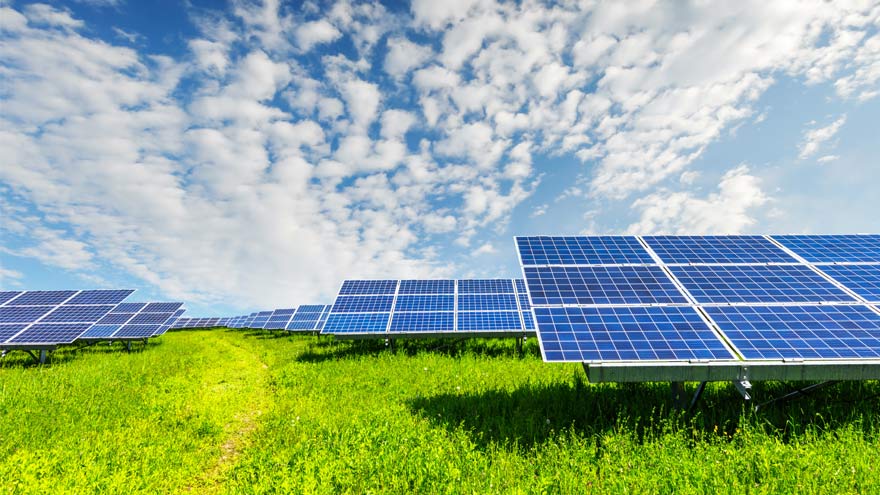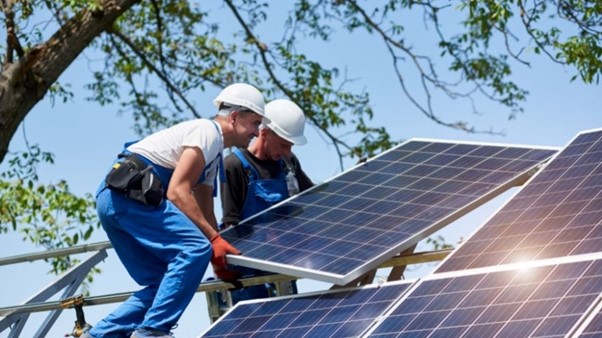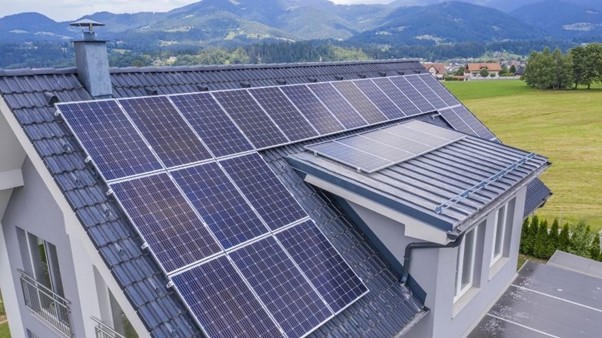Photovoltaic installations are still gaining in popularity and this is hardly surprising. The costs of electricity production are constantly rising and there are no signs of any rapid price drops. On the contrary, it is expected that burning coal and gas will involve increased expenses in the coming years. Photovoltaics allows you to become independent from external electricity suppliers and thus from the prices dictated by them. Therefore, it is worth determining the energy demand of your farm and adjusting the power and dimensions of solar panels to it.

From this article you will learn:
- what is the importance of the dimensions of photovoltaic panels,
- what are the sizes of photovoltaic panels,
- how to adjust the dimensions of panels to a photovoltaic installation.
Photovoltaic panels and their dimensions
When planning the purchase and installation of photovoltaic panels, many future prosumers wonder about the power they achieve, completely disregarding the issue of their dimensions. This is a serious mistake. The size of the modules will have a huge impact on the final shape of the structure, the method of assembly, and ultimately also on the safety of the entire installation.
Check out photovoltaics at the Onninen wholesaler now
It is worth noting that over the years, the dimensions of photovoltaic panels have been significantly standardized. Back in the 1990s, you could find different module variants on the market because it was the manufacturer who decided on their size, weight and power. Most often, the panels were 1.2 x 0.6 m and had a power of about 90 W. Despite the progressive minimization, modern photovoltaic modules have not become smaller at all. On the contrary - they usually have dimensions of 1776 x 1050 mm, but they also achieve much higher power: approx. 380 W.
Although the dimensions of photovoltaic panels given above can be considered standard, there are also deviations from these standards on the market. Modules with a wider frame are becoming more and more popular - for example 1722 x 1134 mm or 1754 x 1096 mm. In the case of the highest power modules, the frame can reach a size of up to 2270 x 1135 mm.
The size of photovoltaic panels should be checked primarily due to the need to calculate the area necessary for installation. It doesn't end there. In addition to the dimensions of the modules, you also need to know their weight. This value will answer the question about the required roof load-bearing capacity. One photovoltaic panel usually weighs from 18 to even 29 kg in the case of the largest modules. The average load will therefore be approximately 20 kg/m 2 . On this basis, it is easy to calculate what the average load-bearing capacity of the roof surface should be. It is worth remembering that the calculations should take into account not only the weight of the modules, but also the remaining elements of the installation.
Photovoltaics in the wholesale offer
How to determine the size of a photovoltaic installation?
The selection of appropriate dimensions of photovoltaic panels will depend primarily on the target size of the entire installation. To calculate it, you need to know the electricity demand of a given household. For this purpose, it is best to check the annual electricity consumption and decide whether photovoltaics should cover all or only part of this value. Once you know the target power of the photovoltaic installation, simply divide it by the average power of the module. This way you can find out how many panels the entire system should consist of.
At this stage, you should consider whether the required number of photovoltaic panels will fit on the roof surface. It is worth remembering that only places exposed to strong sunlight should be taken into account. Modules are usually installed in the south, south-east, south-west or east-west direction. When designing a photovoltaic installation, it may also turn out that not the entire roof surface can be used effectively. We are talking about such difficulties as roof windows or dormers.
Check out photovoltaics at the Onninen wholesaler now
While the installation of photovoltaic panels on a pitched roof may require special attention due to advanced architectural structures, the modules can be placed quite tightly, directly next to each other. Flat roofs, however, require a completely different approach, where due to the width of the shadow zone, installation requires larger distances between the panels.

Before installing photovoltaic panels, make sure that their dimensions and installation spaces are provided. It is also worth considering using modules with higher power. This will save a lot of valuable space on the roof. In the future, it can be used for additional panels if the household's energy demand increases.
The number of photovoltaic cells in it has a direct impact on the power of the module. These are smaller units measuring 166 x 166 mm or 182 x 182 mm that are connected together to create a ready-to-use solar panel. On the market you will find, among others, variants with 48, 60 and 72 full cells and 108, 120 and 144 half cells. However, models intended for households usually have 60 cells, and those intended for industrial purposes have 72 cells.
Which photovoltaic panels should you choose?
Once you know the required dimensions of photovoltaic panels, you can proceed to selecting specific products for home or industrial installations. Since there are many modules on the market that are similar in size and weight, the decision-making process should be guided primarily by the quality of individual models.
Pay attention not only to the efficiency of photovoltaic modules, but also to their durability. They are usually protected by tempered glass from the front and a special foil from the back. It is also worth considering variants equipped with an additional layer of tempered glass on the back. Note, however, that these types of products may be 3-5 kg heavier, which will be very important in the case of some roofs.

If you want to provide your customers with PV panels of the highest quality, check out the Onninen offer. Here you will find mainly products of well-known and respected brands, such as JA Solar, Trina Solar, Longi and LG. Our assortment also includes elements necessary for the assembly of modules. These include items such as complete construction systems and installation accessories that ensure high aesthetics and safety of the system.
Exchange benefits in the new OnnTop loyalty platform!
The Onninen assortment includes the following products upon request:
- JA Solar JAM60S20-390 photovoltaic panel - a monocrystalline module with high efficiency and long service life. It was made using half-cell technology. Thanks to this, it has lower internal resistance and much lower losses compared to traditional panels.
- Longi Solar LR4-66HPH-410M photovoltaic panel - a monocrystalline module made using half-cell technology and Low LID Mono PERC, which translates into slower power degradation and higher energy efficiency at a lower operating temperature.
- Trina TSM-380DE08M.08(II) photovoltaic module – made using half-cut technology and consisting of 120 monocrystalline cells. They are placed on a stiff, light composite base and protected with high-quality tempered glass.
As you can see, in the Onninen offer you will easily find photovoltaic panels perfectly suited to the needs of your customers!